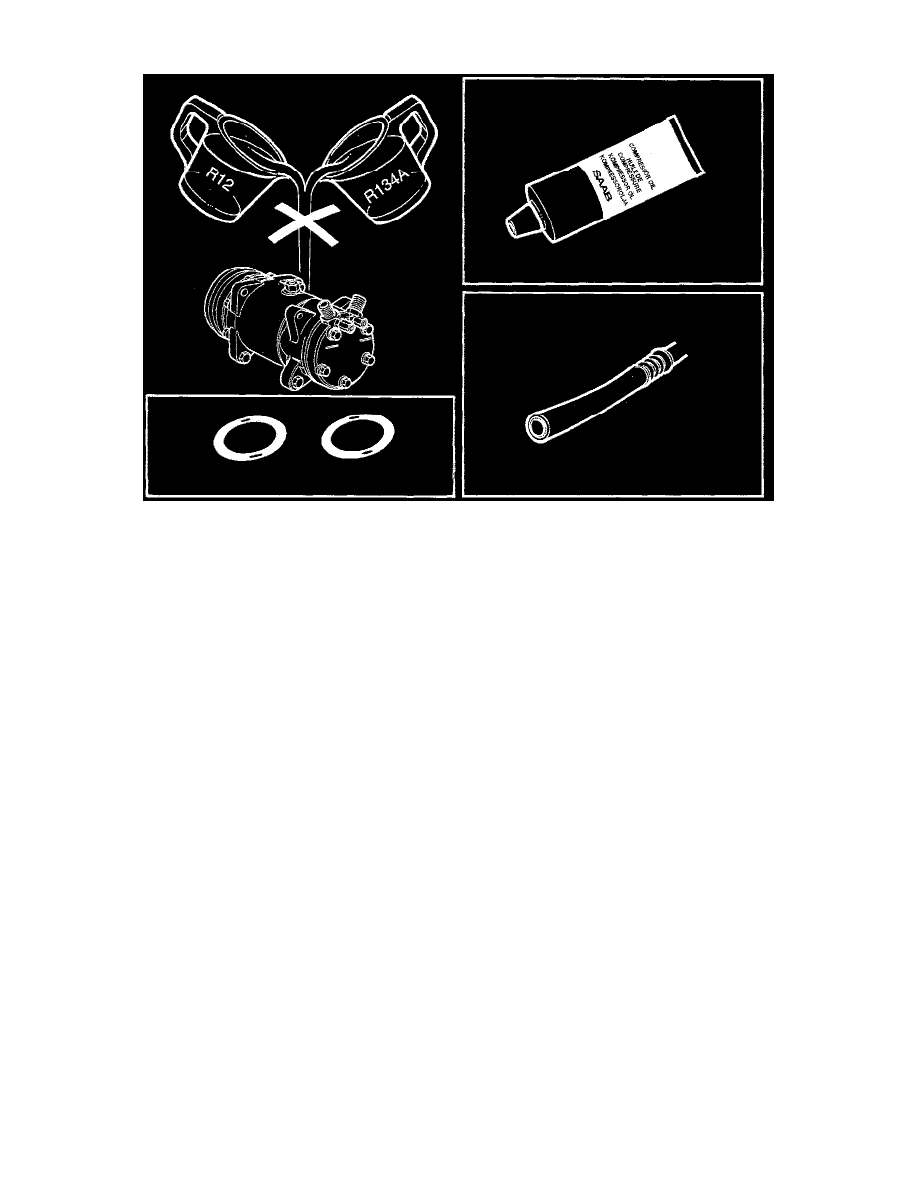900 SE Convertible V6-2498cc 2.5L DOHC (1995)

Refrigerant: Vehicle Damage Warnings
CAUTION:
^
R134a must not be mixed with R12
^
The lack of chlorine in R134a means that the new refrigerant has completely different chemical properties than R12. Neither the compressor oil or
the rubber material used in the R12 system can be used in the new R134a system.
^
Even small quantities of the wrong refrigerant or the wrong compressor oil can cause chemical reactions which may eventually ruin the entire A/C
system. As an example, pressure may become higher than the system is able to cope with. This applies to both the actual A/C units, from
compressors to 0-rings, as well as stations for charging and draining refrigerant.
Two Different Refrigerants
SAAB Automobile AB is among the first car companies in the world to develop an A/C system which uses the new, chlorine free R134a
refrigerant. Unlike R12, the chlorine based freon which was previously used, R134a does not damage the ozone layer in the atmosphere.
From M1992, R134a refrigerant was introduced to certain markets and from M1993, R134a was introduced in all markets. R134a is now available
for converting the old R12 system.
When switching from R12 refrigerant to R134a, the components in the A/C system have been adapted to R134a. In order to prevent components
being switched between the different refrigerants, the following differences have been introduced:
-
Compressor hose connections are different for the two refrigerants.
-
The expansion valve has a different shape.
Otherwise, components are similar for the different refrigerants.
